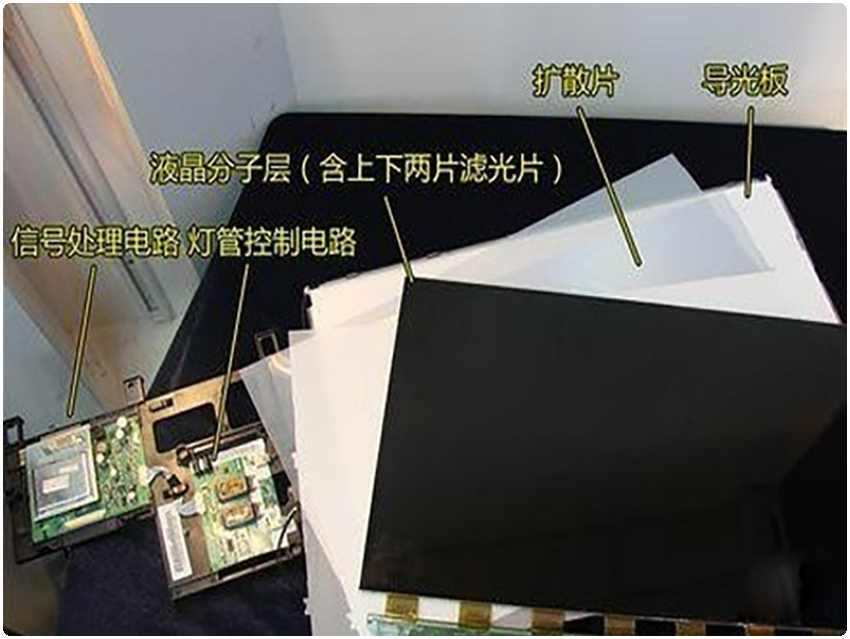CHARACTERISTICS OF LIQUID CRYSTAL MATERIALS FOR TFT LCD
With the rapid development of liquid crystal display(TFT-LCD) technology driven by thin-film transistor TFT array, in recent years, TFT LCD has not only occupied the high-end display market such as portable notebook computers, but also challenged the desktop display with the improvement of manufacturing process and the reduction of cost. By using thin-film transistor array to drive liquid crystal molecules directly, the cross distortion effect is eliminated and the display of information capacity is large. With the use of liquid crystal materials with low viscosity, the response speed is greatly improved, which can meet the needs of video&image display. Therefore, compared with TN-type and STN liquid crystal display, TFT LCD has made a qualitative leap and become one of the most promising display technologies in the 21st century.

TFT-LCD also uses the principle of electro-optic effect of TN type, but the liquid crystal materials used for TFT-LCD are different from the traditional ones. In addition to good physicochemical stability and a wide operating temperature range, liquid crystal materials for TFT LCD should also have the following characteristics:
(1) Low viscosity, the viscosity at 20℃ should be less than 35mPa8226∙S to meet the need of rapid response.
(2) Low threshold voltage(Vth) to achieve low voltage drive and reduce power consumption.
(3) high voltage retention (V.H.R), which means that the liquid crystal materials must have high resistivity, generally require at least more than 1012 Ω 8226 cm.
(4) With TFT LCD matching optical anisotropy(△N), to eliminate the rainbow effect and obtain greater contrast ratio and wide viewing angle. The △N value should be between 0.07~0.11.
At present, TN-LCD has gradually entered the recession period in the liquid crystal display materials, the market demand is gradually shrinking, and the production capacity is excessive, the price competition is fierce, it has no investment value. STN-LCD will gradually enter the mature period, the market demand is rising steadily, and the production technology is fully mature. TFT-LCD in the global scope is entering a new round of rapid growth period, the market demand is growing rapidly, it’s expected to become one of the most promising display materials in the 21st century.
In TN and STN liquid crystal displays, cyanide-terminated liquid crystal materials, such as cyanide-containing biphenyl and phenylcyclohexane liquid crystals, are widely used. Although they have high △εand good electrooptic properties, studies have shown that cyanide-containing compounds are easy to attract ionic impurities and have low voltage retention rate. Its viscosity is still higher than that of fluorinated liquid crystal with the same molecular structure, which limits the application of this kind of compound in TFT-LCD. Ester liquid crystals have the characteristics of simple synthesis method, wide range of phase transition, but their high viscosity leads to a great reduction in TFT LCD formula. Therefore, the development of new liquid crystal compounds to meet the above requirements has become the focus of liquid crystal chemistry research.
Conclusion:
Liquid crystal material is along with the rapid development of the LCD devices, from biphenylnitrile, esters, oxyheterocyclic benzene, pyrimidine ring liquid crystal compounds gradually developed to cyclohexyl (conjugated) benzene, diphenyl acetylene, ethyl bridging and various fluorinated aromatic ring liquid crystal compounds. Japan recently synthesis the structure stability of the fluoride type liquid crystal compounds, its molecular structure is more and more stable, continuously meet the performance requirements for the STN, TFT-LCD. Although the liquid crystal display market in the world is growing bigger, but only a very small share belongs to our country, and it’s concentrated in TN liquid crystal materials. There is certain development in the aspect of TFT LCD materials, but lack of competitiveness. It strongly appeals that the state should take active measures to strengthen the manpower and capital investment in the research and development of LCD devices and materials, so as to revitalize the LCD industry in China.